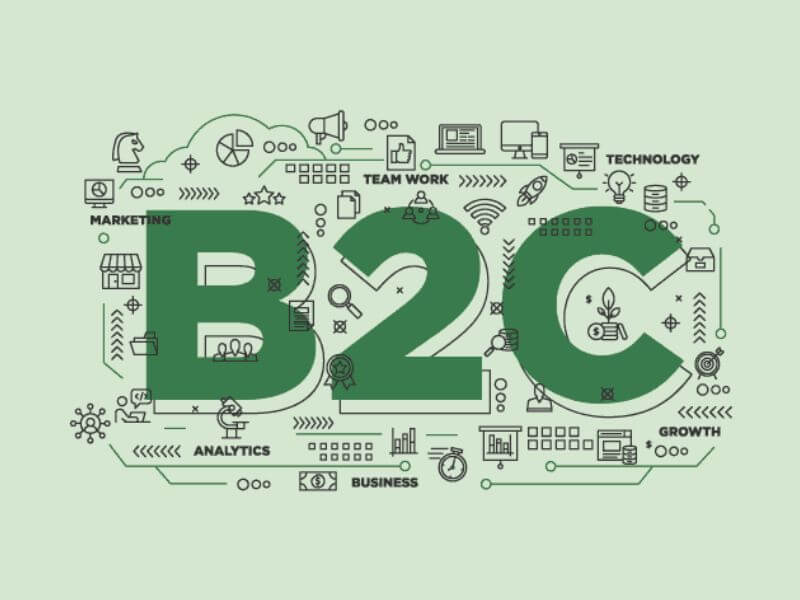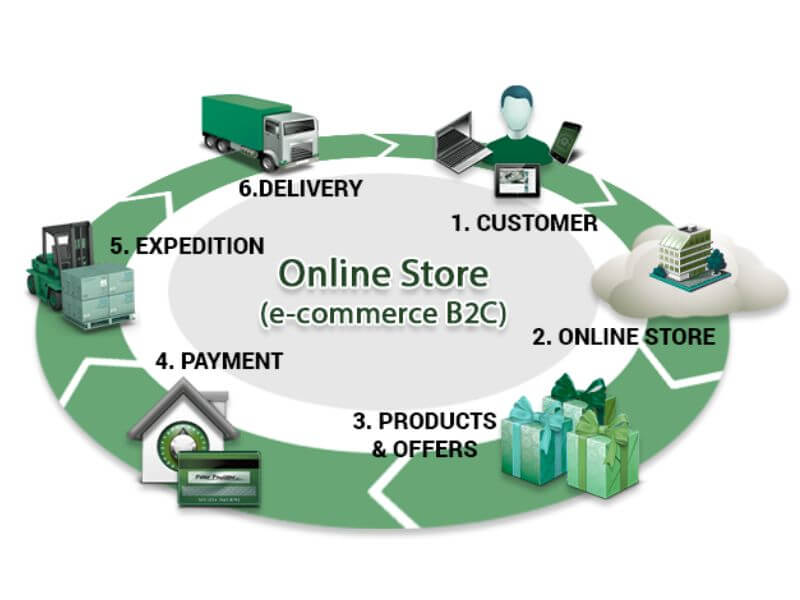The B2C model, or Business-to-Consumer model, fundamentally reshapes how products and services are marketed and sold online. This model involves businesses selling directly to consumers, creating a bridge between the seller and the end user. As e-commerce continues to flourish, understanding how the B2C model drives online sales is essential for businesses looking to thrive in a competitive marketplace.
Understanding the B2C Model

The B2C model focuses on transactions between businesses and individual consumers. Unlike the traditional retail model that may involve intermediaries, the B2C approach eliminates these middlemen, allowing for direct engagement with customers. This direct interaction facilitates personalized marketing and tailored services, catering to the unique preferences of consumers. The B2C model spans various industries, including retail, hospitality, and services, encompassing everything from physical products like PP woven bags and PE tarpaulin to digital goods such as e-books and software.
One of the defining features of the B2C model is its emphasis on convenience. Consumers appreciate the ability to shop online at any time and from anywhere, which has led to a significant shift in purchasing behavior. The ease of comparing products, reading reviews, and accessing a broad range of options contributes to the growing popularity of online shopping.
Key Drivers of Online Sales in the B2C Model
Several key drivers contribute to the success of online sales within the B2C framework. Recognizing these drivers can help businesses develop effective strategies to enhance their sales performance.
First and foremost, changing consumer behavior plays a crucial role. Today’s consumers prioritize convenience and speed, often opting for the ease of shopping from their homes. This shift has transformed their expectations, leading to a demand for faster service and more personalized experiences.
Additionally, the power of personalization cannot be underestimated. Businesses that utilize data analytics to tailor their marketing efforts can significantly boost customer engagement. Personalized recommendations and targeted promotions increase the likelihood of conversion, fostering loyalty among consumers.
Mobile accessibility is another critical driver. With the prevalence of smartphones, consumers are increasingly shopping via mobile devices. This trend necessitates that businesses optimize their websites and applications for mobile compatibility to ensure a seamless shopping experience.
Social media also plays a pivotal role in driving B2C online sales. Platforms like Instagram and Facebook provide businesses with opportunities to engage with consumers directly. Social media marketing allows brands to showcase their products, build relationships, and nurture a community around their offerings.
Lastly, the rise of e-commerce platforms has simplified the process of starting an online business. Services like Shopify, WooCommerce, and Magento provide user-friendly interfaces, enabling businesses to set up their online stores quickly and efficiently. This accessibility has led to an influx of new players in the market, intensifying competition but also expanding choices for consumers.
Technology’s Role in B2C Model Success
Technology plays a pivotal role in the success of the B2C model. It not only facilitates online transactions but also enhances the overall shopping experience for consumers.
- Website Optimization: A well-designed website is crucial for attracting and retaining customers. Businesses must ensure their websites are visually appealing, easy to navigate, and optimized for search engines. This optimization increases visibility and drives organic traffic.
- Payment Solutions: Diverse payment options, including credit cards, digital wallets, and buy-now-pay-later services, enhance the convenience of online shopping. Providing multiple payment solutions can reduce cart abandonment rates and increase conversions.
- Data Analytics: Utilizing data analytics tools allows businesses to gain insights into consumer behavior. Understanding purchasing patterns, preferences, and trends enables companies to make informed decisions about inventory, marketing, and product development.
- Customer Relationship Management (CRM): Implementing CRM systems helps businesses manage customer interactions effectively. These systems enable personalized communication, track customer history, and improve customer service, ultimately fostering loyalty.
- Logistics and Fulfillment: Efficient logistics and fulfillment processes are critical for B2C businesses. Implementing technology-driven solutions to manage inventory, shipping, and returns can enhance customer satisfaction and streamline operations.
Challenges in B2C Online Sales

Despite the numerous advantages of the B2C model, businesses face several challenges that can impede online sales growth.
One significant challenge is the intense competition in the online marketplace. With numerous brands vying for consumer attention, standing out becomes increasingly difficult. Businesses must develop unique selling propositions and invest in effective marketing strategies to capture consumer interest.
Building consumer trust is another hurdle. Online shoppers often express concerns about the security of their personal information and the quality of products. To address these concerns, businesses should prioritize transparency, offer quality guarantees, and provide excellent customer service.
Returns and refunds can also pose challenges for B2C businesses. A clear and fair returns policy is essential for maintaining customer satisfaction while minimizing losses. Balancing the need for customer convenience with the financial implications of returns can be a delicate task.
Data security is a critical concern as well. With growing awareness of privacy issues, businesses must implement robust security measures to protect customer information. Failing to prioritize data security can lead to breaches and a loss of consumer trust.
Lastly, high shipping costs can deter customers from completing their purchases. Businesses need to balance offering competitive shipping rates with maintaining profitability. Exploring options like free shipping thresholds or partnerships with logistics providers can help mitigate this challenge.
Future Trends in B2C E-Commerce
The B2C model is continually evolving, and several trends are shaping the future of e-commerce.
Sustainability is becoming increasingly important to consumers. As awareness of environmental issues grows, businesses that adopt sustainable practices and offer eco-friendly products will likely attract a dedicated customer base. For example, using sustainable materials in products like PP woven bags and PE tarpaulin can enhance brand reputation and appeal to environmentally conscious consumers.
Augmented reality (AR) is gaining traction in the B2C space, allowing consumers to visualize products in their environments before making a purchase. This immersive shopping experience can enhance customer engagement and reduce return rates, providing a competitive advantage for businesses.
Subscription services are on the rise, creating steady revenue streams for businesses. Offering subscription models for products can foster customer loyalty and encourage repeat purchases, ensuring a consistent relationship with consumers.
Voice commerce is another emerging trend. With the increasing use of voice-activated devices, businesses must adapt their strategies to accommodate voice search and optimize their content for voice-activated purchases. This shift presents new opportunities for driving sales and enhancing customer convenience.
Social commerce is set to grow as social media platforms continue to evolve into shopping destinations. Businesses should leverage social commerce strategies to capture this growing market segment, integrating shopping features directly within social media platforms to streamline the purchase process.
B2C vs. B2B
Understanding the differences between B2C (Business-to-Consumer) and B2B (Business-to-Business) models is crucial for businesses operating in the e-commerce space. While B2C model focuses on direct sales to individual consumers, B2B involves transactions between businesses.
B2B sales typically involve larger order volumes, longer sales cycles, and more complex negotiations. In contrast, B2C transactions are generally quicker and more straightforward, catering to immediate consumer needs.
Moreover, B2C marketing strategies often prioritize emotional appeal and brand engagement, whereas B2B marketing tends to focus on building relationships and demonstrating value. Understanding these distinctions can help businesses tailor their approach to meet the unique demands of each model.
Conclusion
In conclusion, the B2C model drives online sales by emphasizing convenience, personalization, and technology. By understanding the key drivers of this model, leveraging technology effectively, and addressing challenges, businesses can optimize their strategies for success in the competitive e-commerce landscape. As trends like sustainability and social commerce continue to emerge, staying ahead of the curve will be crucial for businesses looking to thrive in the B2C space. For those in the industry, embracing the B2C model and its evolving dynamics will be key to achieving sustained growth and success.

